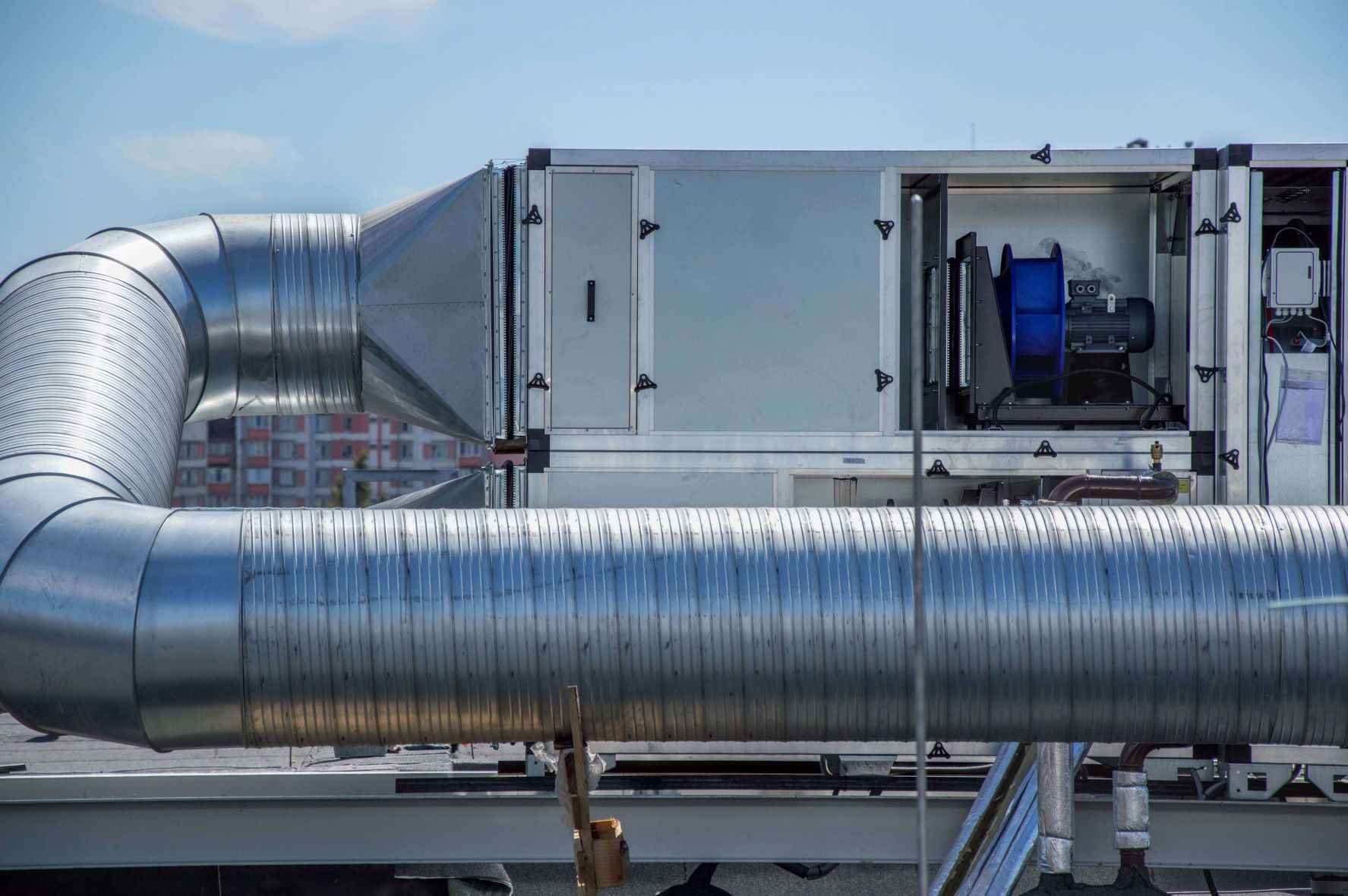Air Handlers

Air handlers have a very important function in HVAC installations, since they establish the airflow required to deliver heating or cooling for indoor spaces. To achieve optimal building performance, having suitable air handlers is just as important as having heating and cooling equipment of the right capacity.
Small air conditioners and packaged units normally have built-in air handlers. On the other hand, larger HVAC systems use hydronic piping to connect air handlers with chillers and boilers. In both cases, the air supply is blown through a heating or cooling element before circulating through indoor spaces.
Air handlers are also equipped with filters, ensuring the air supply is clean, in addition to having a suitable temperature. There is a wide range of filters available, and they are normally placed at the air handler intake to protect internal components from dust and other polluting particles. Filtering requirements change depending on the application - for example, healthcare institutions and some manufacturing processes demand a very high air quality.
MEP engineers can help you select the most suitable air handlers for your property, implementing energy efficiency measures from the start while ensuring compliance with local building codes.
Types of Air Handlers
The abbreviation AHU, which stands for air-handling unit, is often used to indicate air handlers in construction drawings and technical specifications. Based on their physical construction and applications, air handlers may be described with other names:
- Fan coil units are compact air handlers with a simple construction. Their basic components are a fan, a filter, and a heating or cooling coil.
- Make-up air units are larger air handlers designed to condition outdoor air and deliver it to indoor spaces. In other words, these air handlers do not recirculate indoor air.
- Air handlers are also found inside rooftop packaged units, which are HVAC systems designed for exterior installation.
Air handlers also differ in how they supply their airflow for indoor spaces. Some units are designed for connection to a duct system, where the airflow in each area is controlled with dampers. Other air handlers discharge air directly into indoor spaces, without ducts.
Heat exchangers are a fundamental component of air handlers, since they raise or lower the air temperature as needed. Depending on how heat is delivered or removed, these heat exchangers are classified as direct or indirect.
Air handlers with direct heat exchangers move air directly through heating or cooling elements. For example, air is blown through electrical resistance units or gas burners in heating applications, or through AC evaporator units when cooling is required. Air handlers can also be integrated with heat pumps to provide heating and cooling with the same device.
Air handlers with indirect heat exchangers do not move air through the heating or cooling unit. Instead, another substance is used to supply or remove heat. Water is the most common option, since it can be used for either heating or cooling, by circulating it through a boiler or chiller. Steam is also a viable option in applications where only heating is needed.
Air handlers with separate heating and cooling coils can provide dehumidification. Air is cooled below the required temperature to remove humidity by condensation. Since this process cools the air excessively, the heating coil is then used to raise temperature back to a comfortable level.
Improving the Efficiency of Air Handlers
Air handlers are designed to provide sufficient airflow when the building is at full occupancy. However, supplying the design airflow when indoor areas are not full is a waste of energy. Consider that not only fan power is wasted, but also part of the cooling or heating output.
Demand-controlled ventilation (DCV) consists on adjusting airflow according to occupancy, with the purpose of saving energy. HVAC engineers can suggest an adequate method to monitor occupancy, and this information is used to ramp down airflow when the full capacity is not required.
When deploying demand-controlled ventilation, the speed of fans can be adjusted with variable frequency drives (VFD). The potential savings are significant, since fan power is reduced in cubic proportion to fan speed. For example, if a VFD reduces fan speed to 80% of its rated RPM, power consumption is reduced by almost 50%.
The performance of air handlers can also be increased with heat recovery systems, which exchange heat between the outdoor air supply and the exhaust of a ventilation system. Consider that building codes establish minimum outdoor airflow rates, which are calculated based on the type of building and its expected occupancy. However, the exhaust air often has cooling or heating potential that is wasted.
- During summer, a heat recovery system uses the exhaust air to remove heat from the outdoor air supply. Since the outdoor air reaches air handlers at a lower temperature, the cooling load is reduced.
- The opposite process applies during winter, where the exhaust air is used to preheat the outdoor air supply. In this case, the heating load is reduced.
Heat recovery systems decrease the load on HVAC system in both heating and cooling mode, thus reducing the energy expenses of a building.
Like with many other building systems, adequate maintenance is important to keep air handlers under optimal operating conditions. Filters cause an increased pressure loss as they accumulate particles, and this represents a waste of fan power. Also, dust accumulation on the surface of heating and cooling elements reduces their effectiveness. Air handlers should be cleaned are regular intervals to prevent these issues.
Troubleshooting Noise and Vibration Issues in Air Handlers
Noise and vibration are common issues when air handlers are not designed properly or when maintenance has been deficient.
- Oversized fans and inadequate air handler supports are two common causes of noise and vibration issues.
- Consider that some mechanical components wear down over time, and rotating elements of motors and fans can start experiencing unbalance and misalignment.
A certain degree of noise and vibration is unavoidable when using air handlers, especially when dealing with a large unit. However, regular inspections from qualified MEP engineers are recommended to detect issues and solve them proactively. In new installations, noise and vibration can be minimized with smart design decisions.





